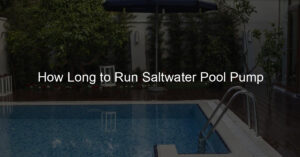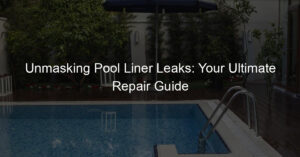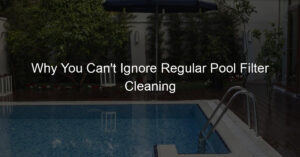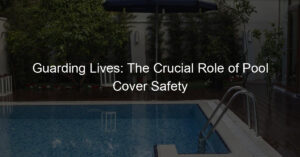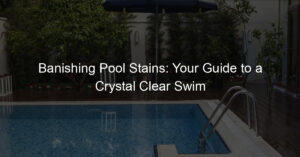Introduction
Are you wondering how frequently you should shock your pool to maintain its cleanliness and clarity? In this comprehensive guide, we will delve into the topic of pool shocking and provide you with valuable insights.
From understanding the benefits of regular pool shocking to determining the optimal frequency for your specific pool, we’ve got you covered.
Get ready to learn the best practices, expert recommendations, and factors to consider when establishing your pool shocking routine.
Understanding the Importance of Pool Shocking: Frequency and Benefits Explained
Regular pool shocking plays a crucial role in maintaining a safe and enjoyable swimming environment. By effectively eliminating harmful bacteria, algae, and contaminants, pool shocking helps ensure water clarity and sanitation.
It also assists in maintaining proper water balance, which is essential for preserving the integrity of pool equipment and preventing issues such as scaling or corrosion.
Maintaining Crystal Clear Water: Optimal Pool Shocking Schedule for Pristine Pools
Determining the ideal frequency for pool shocking can depend on several factors. These include pool usage, weather conditions, water chemistry, and the type of pool you have—whether it’s in-ground or above-ground.
To achieve and maintain crystal clear water, it is recommended to establish a routine that balances the frequency of pool shocking with the specific needs of your pool and its environment.
Determining the Ideal Frequency for Shocking Your Pool: Factors to Consider
Several factors should be considered when determining how often to shock your pool. Factors such as bather load, weather conditions, and the presence of trees or other foliage near the pool can impact the frequency of pool shocking.
By assessing these factors and adapting your pool shocking routine accordingly, you can ensure optimal water quality and swimmer safety.

Step-by-Step Guide: How Often Should You Shock Your Pool for Maximum Effectiveness?
To make the pool shocking process more manageable, we’ve prepared a step-by-step guide to help you determine the optimal frequency. By following these instructions, you’ll be able to maximize the effectiveness of pool shocking and maintain a healthy swimming environment.
From testing water chemistry to calculating dosage, our guide will provide you with clear instructions for a successful pool shocking routine.
Achieving a Balanced Pool Chemistry: Finding the Right Shocking Routine
Maintaining a balanced pool chemistry is essential for water clarity and swimmer comfort. The frequency of pool shocking should be adjusted based on the pool’s pH level, chlorine levels, and other water parameters.
By regularly testing the water and adapting your pool shocking routine to achieve a proper chemical balance, you can prevent issues such as algae growth and cloudy water.
Expert Recommendations: Best Practices for Shocking Your Pool at the Appropriate Intervals
Pool experts recommend different intervals for pool shocking, depending on various factors. Some experts suggest shocking the pool on a weekly basis, while others recommend a bi-weekly or monthly schedule.
We will provide you with insights from professionals in the industry to help you make an informed decision about the best intervals for pool shocking based on your specific circumstances.
Ensuring a Safe and Healthy Swimming Environment: The Role of Regular Pool Shocking
Regular pool shocking is vital for ensuring a safe and healthy swimming environment. It helps in eliminating harmful bacteria and viruses that can cause illnesses.
By maintaining proper water sanitation through regular pool shocking, you can enjoy worry-free swimming and provide a hygienic experience for your family and guests.

Customizing Your Pool Shocking Schedule: Adapting to Regional Climate and Usage Patterns
The regional climate and usage patterns of your pool can influence the frequency of pool shocking. For instance, pools located in warmer regions or those that experience high bather loads may require more frequent shocking to counteract higher levels of contaminants.
By considering these regional and usage-specific factors, you can customize your pool shocking schedule to maintain optimal water quality.
Maintaining Water Clarity and Sanitation: The Relationship Between Shocking and Filtration
Pool filtration and pool shocking go hand in hand to ensure water clarity and sanitation. While filtration helps remove debris and particulate matter from the water, pool shocking is essential for eliminating bacteria and other microorganisms that may not be captured by the filter.
Understanding the relationship between these two processes will allow you to optimize your pool maintenance routine.
Troubleshooting Common Pool Problems: Could Inadequate Shocking Be the Culprit?
Inadequate pool shocking can contribute to various common pool problems, such as algae growth, cloudy water, or persistent chlorine demand.
By examining these issues and identifying whether insufficient pool shocking is the underlying cause, you can take corrective actions to restore water quality and prevent future problems.
Understanding the Impact of Weather Conditions on Pool Shocking Frequency
Weather conditions can significantly impact the frequency of pool shocking. Factors such as temperature, sunlight exposure, and rainfall can affect the growth of bacteria and algae, requiring adjustments in the pool’s shocking routine.
We will discuss how weather conditions influence the frequency of shocking and provide guidance on adapting your pool maintenance schedule accordingly.
Unveiling the Secrets to Long-lasting Pool Water Quality: Shocking Strategies Unveiled
Consistent pool shocking is a key strategy for maintaining long-lasting water quality. We will uncover the secrets to effective and long-lasting pool water quality, including the role of regular shocking, proper water circulation, adequate filtration, and maintaining balanced water chemistry. By implementing these strategies, you can enjoy consistently clear and healthy pool water.

Discovering the Optimal Timeframe for Shocking Different Types of Pools: In-ground vs. Above-ground
The type of pool you have, whether it’s an in-ground or above-ground pool, can influence the optimal timeframe for pool shocking. In-ground pools typically require more frequent shocking due to their larger volume of water and increased exposure to environmental factors.
Conversely, above-ground pools may have different requirements based on their size and construction. We will explore the nuances of pool shocking for different pool types and help you determine the ideal timeframe for your specific pool.
Finding the Right Pool Shocking Products: Choosing the Best Option for Your Pool’s Needs
Selecting the right pool shocking products is crucial for achieving desired results. There are various types of pool shock available, including chlorine-based shocks, non-chlorine shocks, and mineral-based shocks.
Each product has its advantages and considerations. We will provide an overview of different pool shocking products, their benefits, and how to choose the best option for your pool’s specific needs.
Pool Shocking Parameters Comparison
Here is a table that compares important parameters for different pool shocking products:
| Parameter | Chlorine-Based Shock | Non-Chlorine Shock | Mineral-Based Shock |
|---|---|---|---|
| Active Ingredient | Chlorine | Potassium peroxymonosulfate | Copper or silver ions |
| Oxidizing Power | High | Medium | Low |
| Residual Effect | Short | Short | Long |
| Compatibility | Compatible with all pool types | Compatible with all pool types | Compatible with all pool types |
| Cost | Moderate | Moderate | High |
Conclusion
In conclusion, the frequency of pool shocking plays a vital role in maintaining the cleanliness, clarity, and safety of your pool. By understanding the factors that influence pool shocking frequency, following expert recommendations, and adapting your routine to the specific needs of your pool, you can achieve optimal water quality.
Regular pool shocking, in combination with proper filtration, water balance, and maintenance, will help you enjoy a pristine swimming environment. Remember to choose the right pool shocking products and consider the unique characteristics of your pool, such as type, usage patterns, and regional climate.
By implementing these practices, you can ensure a safe and refreshing swimming experience for yourself, your family, and your guests.
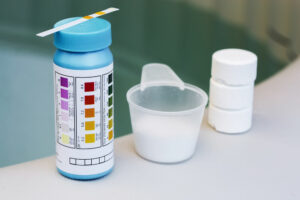
Other Considerations
Apart from the subtopics covered above, there are a few additional considerations to keep in mind regarding pool shocking. Let’s explore them:
Understanding the Impact of Pool Size and Volume on Shocking Frequency
The size and volume of your pool can influence the frequency of pool shocking. Larger pools generally require more frequent shocking due to the dilution effect of a larger water volume.
Smaller pools may need less frequent shocking but still require regular maintenance. Consider the size and volume of your pool when determining the optimal shocking frequency.
The Role of Pool Usage in Determining Shocking Frequency
The usage patterns of your pool also play a significant role in determining the frequency of pool shocking. Pools that experience heavy usage, such as those used by multiple families or for commercial purposes, may require more frequent shocking due to increased bather load and potential contamination. Evaluate the frequency and intensity of pool usage to adjust your pool shocking routine accordingly.
Balancing Pool Shocking with Other Chemical Treatments
It is essential to balance pool shocking with other chemical treatments, such as chlorine disinfection and pH adjustment. Over-shocking or combining incompatible chemicals can lead to adverse effects on water quality and equipment.
Follow recommended guidelines and consult with pool professionals to ensure the proper integration of pool shocking with other chemical treatments.
Considering Seasonal Variations in Pool Shocking
Seasonal variations can impact the frequency of pool shocking. In warmer months or during periods of heavy rain, pools may require more frequent shocking to combat increased bacteria and algae growth.
Conversely, in colder months or when the pool is not in use, shocking frequency may be reduced. Adapt your pool shocking routine based on seasonal variations to maintain optimal water quality throughout the year.
By considering these additional factors and incorporating them into your pool maintenance routine, you can further enhance the effectiveness and efficiency of your pool shocking practices.



